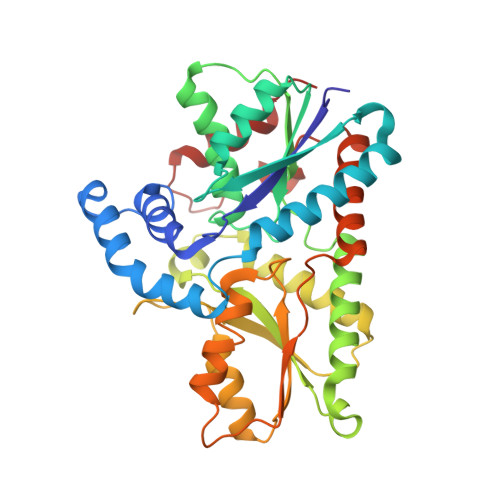Substrate interactions with human ferrochelatase
Medlock, A., Swartz, L., Dailey, T.A., Dailey, H.A., Lanzilotta, W.N.(2007) Proc Natl Acad Sci U S A 104: 1789-1793
- PubMed: 17261801
- DOI: https://doi.org/10.1073/pnas.0606144104
- Primary Citation of Related Structures:
2HRC, 2HRE - PubMed Abstract:
Ferrochelatase, the terminal enzyme in heme biosynthesis, catalyzes the insertion of ferrous iron into protoporphyrin IX to form protoheme IX. Human ferrochelatase is a homodimeric, inner mitochondrial membrane-associated enzyme that possesses an essential [2Fe-2S] cluster. In this work, we report the crystal structure of human ferrochelatase with the substrate protoporphyrin IX bound as well as a higher resolution structure of the R115L variant without bound substrate. The data presented reveal that the porphyrin substrate is bound deep within an enclosed pocket. When compared with the location of N-methylmesoporphyrin in the Bacillus subtilis ferrochelatase, the porphyrin is rotated by approximately 100 degrees and is buried an additional 4.5 A deeper within the active site. The propionate groups of the substrate do not protrude into solvent and are bound in a manner similar to what has been observed in uroporphyrinogen decarboxylase. Furthermore, in the substrate-bound form, the jaws of the active site mouth are closed so that the porphyrin substrate is completely engulfed in the pocket. These data provide insights that will aid in the determination of the mechanism for ferrochelatase.
Organizational Affiliation:
Department of Biochemistry and Molecular Biology, University of Georgia, Athens, GA 30602, USA.



















